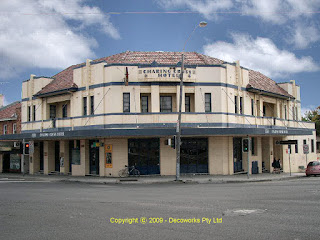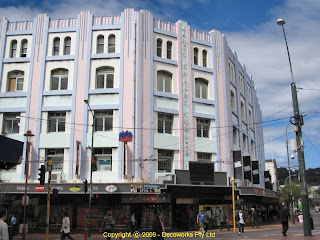Charing Cross Hotel

The Charing Cross Hotel at 81 Carrington Road in Waverley is little changed since it replaced an inn built on the site by William Newland in 1857. Originally known as Newlands Inn, its name was changed to the Charing Cross Hotel in 1859. The original hotel was demolished and rebuilt circa 1935. The newer building, designed by Sidney Warden, was featured in the journals "Decoration and Glass", Vol. 2, No. 3, July 1936.(see below) The hotel is one of three Art Deco hotels in the immediate vicinity. The Robin Hood hotel is directly opposite on Bronte Road while the Tea Gardens hotel is just a 10 minute walk towards Bondi Junction. Facade detail Upstairs verandah "The Public Bar, where glass and stainless steel sing the triumph of modernity and modern materials.White opal glass is used in the unusual light fittings which conceal the structural support of the glass and steel canopy." "Decoration and Glass", Vol. 2, No. 3, July 1936."





